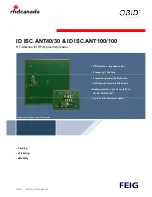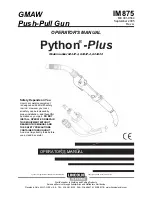
G
G
S
S
L
L
A
A
r
r
t
t
i
i
r
r
a
a
I
I
n
n
s
s
t
t
a
a
l
l
l
l
a
a
t
t
i
i
o
o
n
n
M
M
a
a
n
n
u
u
a
a
l
l
w
w
w
w
w
w
.
.
g
g
a
a
r
r
a
a
v
v
e
e
n
n
t
t
a
a
.
.
c
c
a
a
G
G
S
S
L
L
A
A
r
r
t
t
i
i
r
r
a
a
I
I
n
n
s
s
t
t
a
a
l
l
l
l
a
a
t
t
i
i
o
o
n
n
M
M
a
a
n
n
u
u
a
a
l
l
-
-
4
4
6
6
-
-
2
2
0
0
0
0
4
4
G
G
a
a
r
r
a
a
v
v
e
e
n
n
t
t
a
a
(
(
C
C
a
a
n
n
a
a
d
d
a
a
)
)
L
L
t
t
d
d
.
.
P
P
a
a
r
r
t
t
#
#
1
1
5
5
5
5
2
2
8
8
R
R
e
e
v
v
D
D
P
P
r
r
i
i
n
n
t
t
e
e
d
d
i
i
n
n
C
C
a
a
n
n
a
a
d
d
a
a
Appendix D: Garaventa Conventions on Electrical
Drawings
About the conventions used on
these schematics:
A box with a number within it
indicates a terminal. The letters
beside it describe which terminal
strip it is associated with. For
example,
TB 2
indicates terminal
number two on the “TB” terminal
strip.
Numbers with a “C” indicate
the terminal of the gray plastic plug-
type connector for that harness.
When looking at the back of the
connector, a small ring of numbers
can be seen where the wires enter
the waterproof rubber grommet.
That number corresponds to the
number next to the “C”.
A hollow rectangle with a “K”
number beside it indicates the coil
of a contactor, relay or timer. Thus,
K1
describes the coil of the K1
safety contactor.
All switches and contacts are
shown
in the rest position
, i.e.
drawn as they would look without
being powered, pushed,
mechanically engaged, etc. This is
important to note because it will
differentiate between normally open
and normally closed switches.
Figure 29:
Component symbols
used in schematics
Содержание GSL Artira
Страница 2: ......







































